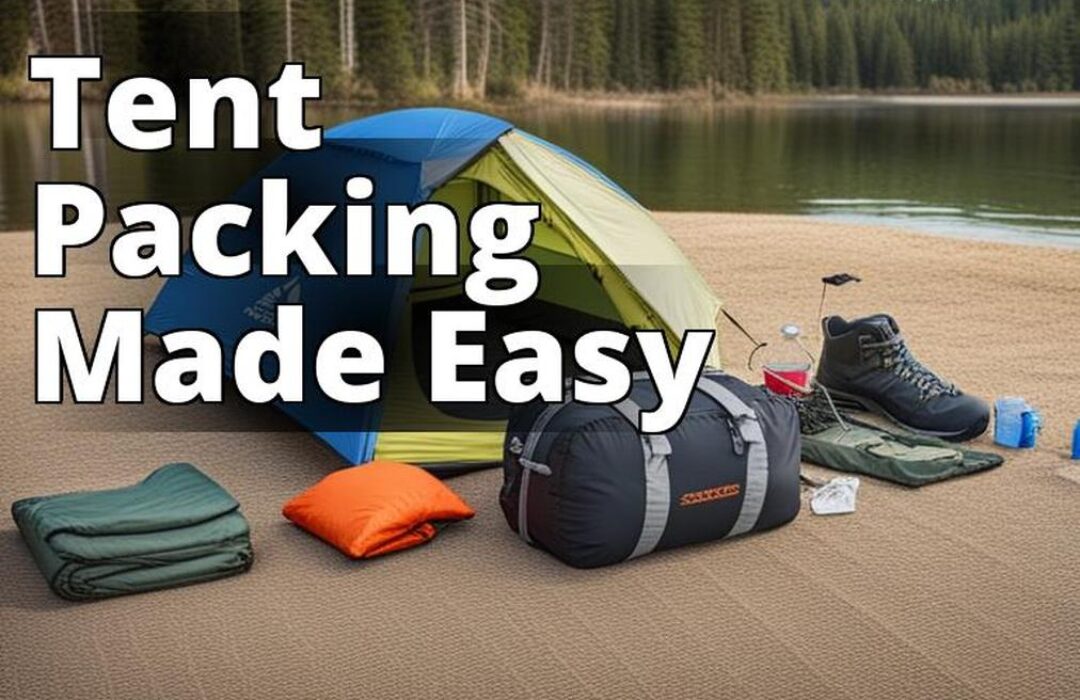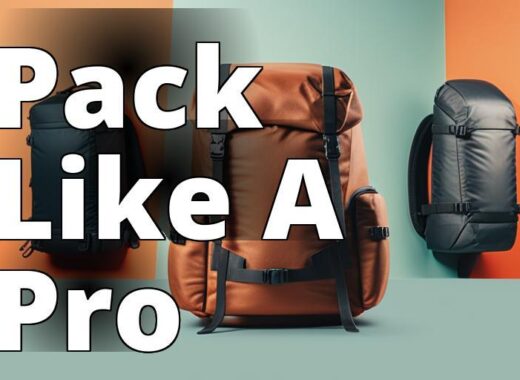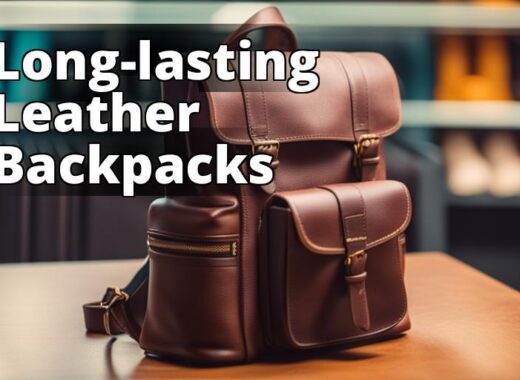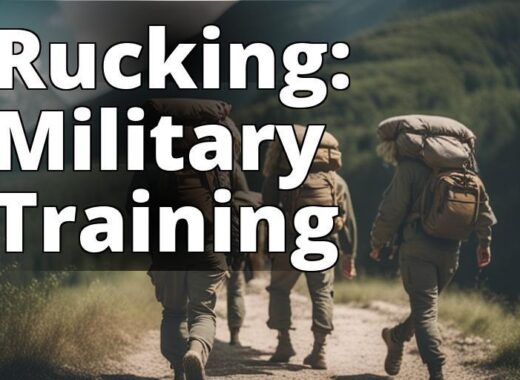Are you wondering how to pack a tent in your backpack for your next adventure? Properly packing a tent is essential to ensure a comfortable and successful outdoor experience. In this guide, we will provide you with step-by-step instructions on how to pack your tent in your backpack to guarantee that it is secure, organized, and easy to carry.
Packing a tent in a backpack can be challenging, especially if you are a beginner. However, with the right guidance, anyone can pack their tent like a pro. This guide will provide you with all the information and tips you need to ensure that your tent is packed correctly.
Proper packing of a tent is crucial for several reasons. First, it assures that your tent is secure and won’t fall out of your backpack during your hike. Second, it saves you space in your backpack, enabling you to pack other essential items. Finally, it protects your tent from damage, ensuring that it lasts for many outdoor adventures to come.
Guide to Packing a Tent in Your Backpack
- Choosing a suitable backpack for your tent is important.
- Disassemble the tent and roll up the tent body tightly.
- Pack stakes separately, consider weight distribution, and double-check your backpack before setting off.

Choosing the Right Backpack for Your Tent
Before packing your tent, you need to choose the right backpack for it. The size and weight of your tent, as well as the type of terrain and weather conditions for the trip, will determine the type of backpack you need. Here are some factors to consider when choosing a backpack for your tent:
- Capacity: Choose a backpack with a capacity large enough to accommodate the tent, sleeping bag, and other essential items.
- Weight: Look for a lightweight backpack to ensure that you can carry it comfortably.
- Fit: Make sure the backpack fits you properly to ensure that you can carry it for an extended period without discomfort.
- Features: Choose a backpack with features such as compression straps, external loops, and pockets to make packing easier.
When packing your tent, look for a backpack with a designated compartment or straps to secure the tent. This will ensure that the tent stays in place and doesn’t shift during your hike.
Disassembling Your Tent
Before packing your tent, you need to disassemble it. Disassembling your tent is crucial to ensure that it fits properly in your backpack and doesn’t take up too much space. Here’s how to disassemble your tent:
- Remove the tent stakes: Use a stake puller to remove the tent stakes from the ground.
- Remove the tent poles: Carefully remove the tent poles from their sleeves or clips. Make sure that you don’t bend or damage them.
- Remove the rainfly: Remove the rainfly from the tent body and shake off any debris.
- Remove the tent body: Carefully remove the tent body from the ground and shake off any debris.
Rolling Up the Tent Body
Rolling up the tent body is an essential step in packing your tent. Here’s the best way to roll up the tent body:
- Lay the tent body flat on the ground.
- Fold the tent body in half lengthwise.
- Roll up the tent body tightly, starting at one end.
- Use compression straps or a stuff sack to keep the tent body tightly compacted.
Folding the Rainfly
Folding the rainfly is essential to ensure that it doesn’t take up too much space in your backpack. Here’s how to fold the rainfly for easy packing:
- Lay the rainfly flat on the ground.
- Fold the rainfly in half lengthwise.
- Fold the rainfly in half again, this time widthwise.
- Roll up the rainfly tightly.
- Use compression straps or a stuff sack to keep the rainfly tightly compacted.
When folding the rainfly, make sure that it is clean and free from debris. This will prevent it from getting damaged during your hike.
Rolling Up the Tent Poles
Rolling up the tent poles is essential to ensure that they don’t take up too much space in your backpack. Here’s how to roll up tent poles for easy packing:
- Lay the tent poles flat on the ground.
- Fold the tent poles in half or thirds, depending on their length.
- Use a rubber band or Velcro strap to secure the tent poles.
- Consider using a separate pole bag to keep them organized and prevent damage.
Using a separate pole bag will protect the poles from damage and make them easier to pack.
Packing the Tent Stakes
Packing the tent stakes separately is essential to prevent them from damaging other items in your backpack. Here’s how to pack stakes in a separate stake bag or pocket:
- Gather all the tent stakes and put them in a stake bag or pocket.
- Make sure that the stake bag or pocket is secure and won’t tear during your hike.
Packing the stakes separately will also make them easier to find when setting up your tent.

Placing Your Tent in Your Backpack
Once you’ve disassembled your tent and packed all the components, it’s time to place the tent in your backpack. Here’s how to do this:
- Open the backpack and lay it flat on the ground.
- Place the tent body in the designated compartment or at the bottom of the backpack.
- Place the tent poles in the side pockets or in a separate pole bag.
- Place the rainfly on top of the tent body.
- Place the stake bag or pocket in a designated pocket or on top of the rainfly.
| Tip | Description |
|---|---|
| Use compression straps or a stuff sack | Keeping the tent tightly compacted will prevent it from shifting during your hike. Compression straps or a stuff sack can be used for this purpose. |
| Use external loops or straps | External loops or straps can be used to secure the backpack and prevent the tent from shifting. |
| Don’t overload the backpack | Overloading the backpack can cause discomfort and make it difficult to balance. Make sure to distribute the weight evenly and avoid carrying unnecessary items. |
Securing Your Tent
Securing your tent in your backpack is essential to ensure that it stays in place during your hike. Here are some tips for securing your tent:
- Use compression straps or a stuff sack to keep the tent tightly compacted.
- Use external loops or straps to secure the backpack and prevent the tent from shifting.
- Make sure that the backpack is not overloaded, as this can cause discomfort and make it difficult to balance.
Considering Weight Distribution
Weight distribution is crucial when packing your backpack. Here are some tips for ensuring that your backpack is balanced:
- Place heavier items at the bottom of the backpack, close to your back.
- Distribute weight evenly on both sides of the backpack.
- Use compression straps to tighten the backpack and prevent items from shifting.
Cleaning and Storing Your Tent
After your trip, you need to clean and store your tent properly to ensure its longevity. Here are some tips for cleaning and storing your tent:
- Shake off any debris before packing it.
- Clean the tent with a mild soap and water solution.
- Rinse the tent thoroughly and let it dry completely.
- Store the tent in a cool, dry place, preferably in a storage sack or bag.
Checking Your Backpack for Any Loose Items
Before setting off on your hike, double-check your backpack for any loose items. Here are some tips for making sure everything is secure and tightly packed:
- Check that all zippers and pockets are closed.
- Make sure that all straps and buckles are tightened.
- Shake the backpack to ensure that nothing is moving around.
Personal Story: Learning the Importance of Choosing the Right Backpack
When I first started camping, I had no idea how important it was to choose the right backpack for my tent. I used an old backpack that I had lying around, thinking it would do the job just fine. However, after a few hours of hiking, I quickly realized that I had made a big mistake.
The backpack was too small for my tent, and it was not designed to carry heavy loads. As a result, my shoulders and back were in a lot of pain, and I had to stop and readjust the backpack several times.
After that experience, I decided to invest in a proper backpack designed for camping and hiking. I did some research and found one that was the right size and had all the features I needed to pack my tent safely and comfortably. The difference was incredible.
On my next camping trip, I was able to carry my tent without any discomfort or pain. The backpack was well-balanced, and the weight was evenly distributed, making it easy to hike for long distances. I learned that choosing the right backpack is just as important as packing the tent correctly.
Now, I always make sure to choose a suitable backpack before heading out on a camping trip. It makes a huge difference in terms of comfort and convenience, and it allows me to enjoy the great outdoors without any unnecessary discomfort or pain.
Conclusion
Properly packing a tent in your backpack is crucial for a comfortable and successful outdoor experience. By following the steps outlined in this guide, you can ensure that your tent is secure, organized, and easy to carry. Remember to choose the right backpack, disassemble your tent, and pack each component separately. Happy hiking!
The author of this guide is an experienced backpacker and outdoor enthusiast with over a decade of experience in camping and hiking. They have hiked in various terrains and weather conditions, from the scorching deserts of Utah to the freezing temperatures of Alaska. They have also volunteered as a guide for local hiking groups and have trained others on how to pack and carry their gear efficiently.
The author’s knowledge is backed by research studies on backpacking and outdoor gear. They have extensively researched the best backpacks for camping, the most durable tent materials, and the most efficient ways to pack camping gear. The author has also consulted with expert campers and gear manufacturers to gather information on the latest trends and innovations in camping gear.
Overall, readers can trust that the tips and techniques shared in this guide are based on the author’s personal experience and thorough research.




